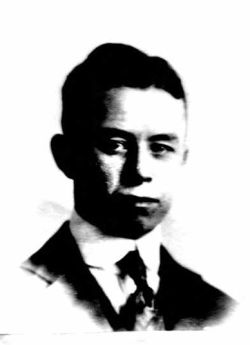I found the following tidbit in the February 2, 1917 issue of the Kinsley Mercury.
“Word has been received from Lester Johnson that he, in company with twelve other young men attending medical college, are expecting to sail for France the sixth of February to take up his duties in the American Ambulance Corps.”
Digging in the library archive, I discovered that Lester Johnson graduated from Kinsley High School in 1911. I was curious about why he was joining the American Ambulance Corp two months before the United States would enter the war. Doing a little research, I found that the American Volunteer Motor Ambulance Corps, also known as the Norton-Harjes Ambulance Corp was started in London in the fall of 1914 by noted archeologist Richard Norton, the son of a Harvard professor, and Henry Herman Harjes, a French millionaire banker who wished to help Norton by donating funds and ambulances.
The Corps was established to assist the movement of wounded Allied troops from the battlefields to hospitals in France. It began with two cars and four drivers and was associated with the British Red Cross and St. John Ambulance.
The poet Robert W. Service joined the Ambulance Corps in 1915. Perhaps you remember him from your high school lit book as the writer of “The Cremation of Sam McGee.” Before he became famous for his Alaskan narrative poetry, he wrote a book of war poetry, Rhymes of a Red Cross Man, in 1916. The first poem, entitled “Foreword” begins:
I’ve tinkered at my bits of rhymes
In weary, woeful, waiting times;
In doleful hours of battle-din,
Ere yet they brought the wounded in;
Through vigils of the fateful night,
In lousy barns by candle-light;
In dug-outs, sagging and aflood,
On stretchers stiff and bleared with blood;
By ragged grove, by ruined road,
By hearths accurst where Love abode;
By broken altars, blackened shrines
I’ve tinkered at my bits of rhymes.
You can download Rhymes of a Red Cross Man for free to your computer or device. Let me know if you agree that that they poignantly capture the duties and life of an ambulance driver.
By 2017, when Lester Johnson went to France, the corps had grown to six hundred American volunteers driving three hundred ambulances. Below is a picture of Lester Johnson as he embarked on his way to France. I’ll be writing more about Lester in the next few posts.

